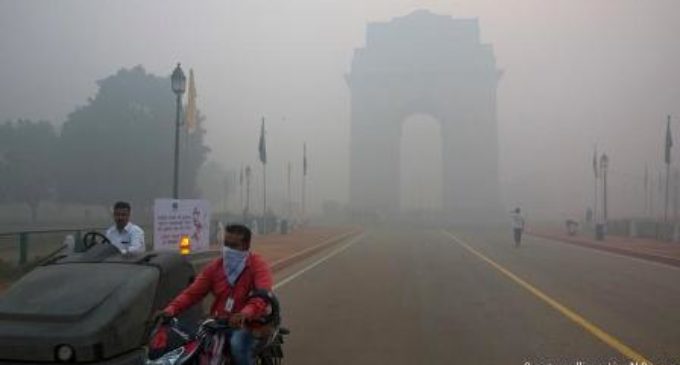Delhi’s air quality worsens, AQI dips to ‘hazardous’ category in this area

Delhi, Octo 29: Delhi’s air quality remained in the ‘very poor’ category on Sunday, with the air quality index (AQI) recorded at 309, according to the latest data by SAFAR-India. Some regions were barely within the ‘very poor’ category mark except Jahangirpuri, which recorded the season’s highest AQI at 566 in the ‘hazardous’ category.
As of 9 am, data by the Central Pollution Control Board (CPCB) showed that the AQI in Jahangirpur stood at 406 in the ‘severe’ category – a minimal improvement from ‘hazardous’ this morning.
Delhi recorded an average AQI of 304 in the ‘very poor’ category on Saturday, according to CPCB data. This was a drop from Friday’s 261 in the ‘poor’ category.
Meanwhile, Noida’s air quality also plummeted as the city’s AQI was recorded at 490 in the ‘hazardous’ category. On Saturday, the city’s average AQI settled at 286 in the ‘poor’ category, the CPCB data stated.
The Centre’s Air Quality Early Warning System for Delhi predicted that the city’s air quality will deteriorate further, with drop in temperatures and slow wind speed primarily being the reasons, news agency PTI reported. The national capital’s air quality is expected to remain very poor till the end of the month.
An AQI between zero and 50 is considered ‘good’, 51 to 100 ‘satisfactory’, 101 to 200 ‘moderate’, 201 to 300 ‘poor’, 301 to 400 ‘very poor’, and 401 to 500 ‘severe’.
Delhi is currently under the second phase of the Graded Response Action Plan (GRAP). Additionally, the Delhi government’s ‘Red Light On, Gaadi Off’ campaign was implemented on October 26 after Environment Minister Gopal Rai’s announcement earlier this week. The campaign aims at reducing air pollution by encouraging people to turn off their engines when waiting at red lights.
Delhi and its neighbouring regions in North India witness a prominent decline in the air quality between November and January, mainly because of meteorological conditions, firecracker burning, and farm fires (stubble burning). Though Rai said that this year’s stubble burning cases so far are fewer than last year, with only around 2,500 incidents recorded as opposed to 5,000 in 2022, air pollution in the national capital may see a spike owing to unfavourable meteorological conditions.
-PTI






